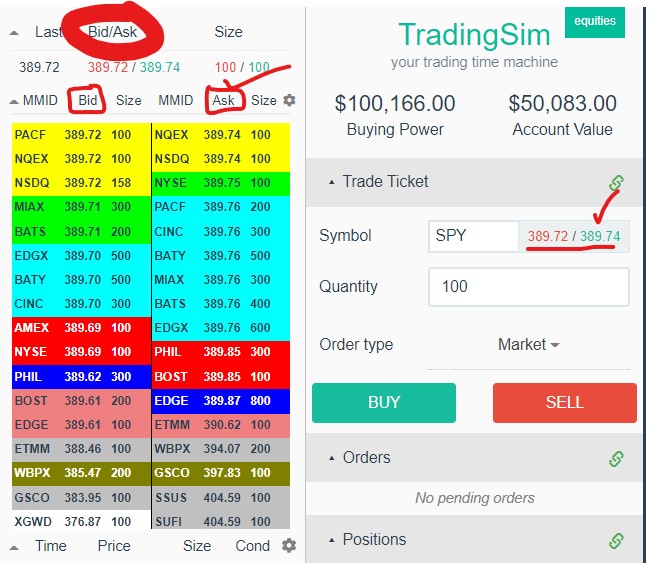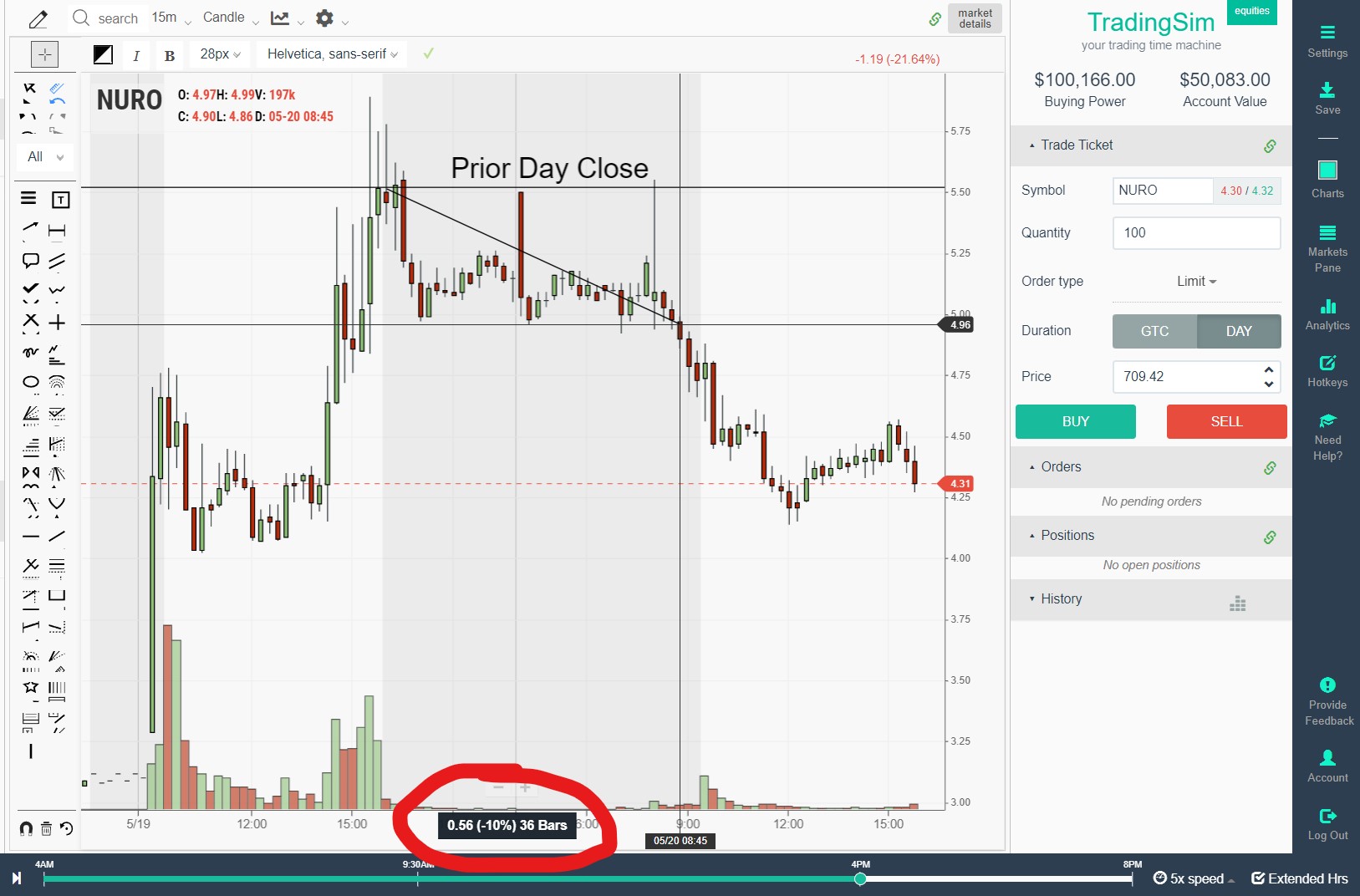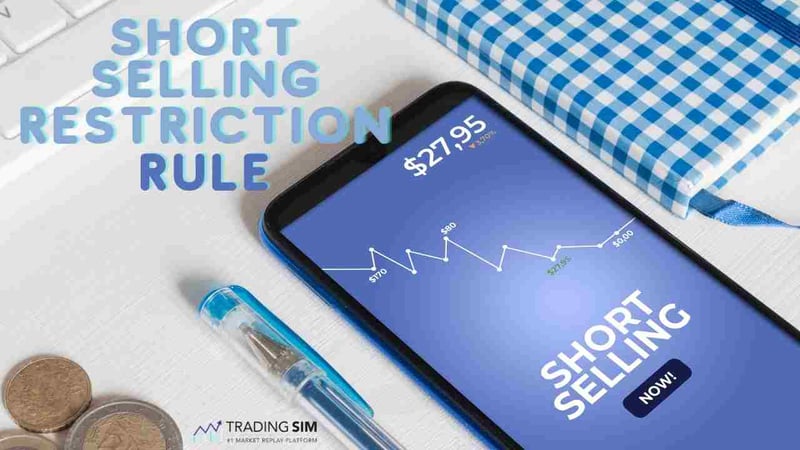What is short sale restriction?
Short sale restriction (SSR) is an interesting trading rule that was established in 2010 and is not always popular amongst day traders in particular. According to the short sale restriction rule, traders cannot short a stock on a downtick that has already fallen by more than 10% versus the closing price of the prior session. This basically means that if a stock is tumbling lower, you cannot short the stock in such a way as to add increased selling pressure, which would cause the stock to continue falling more rapidly.
For that reason, the SSR rule is a bit of a stop-gap measure.
The short sale restriction rule is also known as the alternate uptick rule. By using deductive reasoning, the short SSR rule means we can only establish a short position on a stock on an uptick. The rule eliminates downward volatility and eliminates what would be an easy gain for short sellers who would be trying to kick a stock while it’s down. In other words, you can’t slam the bid on the short side.

Note that there is no restriction or rule for establishing a long position in the stock when the stock price is rising.
Originally, the rule that was in place on the US markets between 1938 and 2007, prohibited any short position to be established on a downtick of a stock. In 2007, the SEC lifted this rule altogether, allowing the ability to short a stock at any time. Finally, in 2010, the short sale restriction rule as we know it today was established and is still in place.

Why would a short sale be restricted?
If short sellers coordinated a short attack on the stock, it could potentially fall to oblivion without any chance for the stock to recover. This is often the case with pump and dumps. This is why the SSR rule is triggered on certain stocks with downward momentum.
When you establish a short position on a stock, you are essentially borrowing shares at the current price and then repaying those shares at a lower price when the stock falls. A short sell trade requires the stock to fall in price from when those initial shares were bought in order to be profitable.
One aspect of the cryptocurrency markets that makes it riskier to trade is that there are no short-sell restrictions. Traders can theoretically continue to short attack a token until it hits zero. We've seen ugly crashes in the crypto world like LUNA. The equities market is much more regulated and therefore short-sellers are limited to when they can establish the short position against the underlying stock.
Is a short sale restriction good?
Yes and no. The short sale restriction is good for everyone except short sellers. Not having the short sale restriction could potentially lead to a stock plummeting in price due to continued downward selling pressure. Having this rule in place helps to protect the markets from added short side volatility, and helps protect companies from a coordinated short attack.
If you are a short seller, it is easy to understand why you might be frustrated by this rule. After all, investors who want to establish long positions in stocks as the stock is rising by more than 10% have no restrictions. This rule is in place to limit short sellers from capitalizing on a stock that is already down by a large amount since the start of the session.
That being said, short sellers can still short stocks once SSR is triggered. They simply have to short on an uptick in price, or place an order on the ask. The SSR is often seen as a deterrent for short sellers, so it can also play into the hand of some day traders who look to take advantage of the rule.
What does short sale restriction mean for stocks in day trading?
For day traders, short selling is considered to be a trading strategy that is detrimental and potentially damaging to the broader markets. To prevent the further shorting of a stock that is already trading substantially lower, the SEC introduced the short sale restriction rule. However, there are other restrictions on shorting while day trading.
One obstacle is ensuring the brokerage you are shorting with has the shares to lend you if you want to short the stock. These are called hard-to-borrow stocks. If it doesn’t have the locates, then this is considered a naked short sell.
As we saw with the meme stock short squeezes, a naked short sell can be pretty risky if it goes against you. If the stock price rises, then the short seller will need to close out the short position. This means buying the borrowed shares at a higher price and taking a loss for the trade.
In terms of day trading, a short sale restriction certainly adds another layer of difficulty for short-sellers. Given the ongoing volatility that takes place during a trading session, it might be difficult for a short seller to time a short sell when the stock is in an uptick. It is clear that the intention of making short selling a more arduous task is the goal of these SEC regulations.
For that reason, even bullish traders may be hesitant if SSR is turned on. Many day traders believe that the easier a stock is to short, the more bears can pile in. The more bears that pile in on the short side, the more potential for a short squeeze. Thus, you can assume that the SSR rule calms the waters and balance the playing field in some ways.
When does short sale restriction (SSR) start?
It doesn’t take much for a stock to see the short sale restriction rule kick in. By definition, whenever a stock drops by 10% or more from the previous session’s closing price, it triggers short sale restriction rules. This is to prevent too much supply in a stock and level the price action.
Let’s look at an example with real prices to see how this would work.
Short Sale Restriction Example: NURO

Notice how in the example above, we have used the measuring tool to draw a 10% decline from the prior day's close. Once this value is triggered, the stock has SSR turned on. It will remain on until the close of the next day. In this example, the trigger would have been around $5 after NURO closed at $5.50 the prior day.
Short Sale Restriction Example 2:
Let’s just use some round numbers for ease of understanding.
A stock (XYZ) closed the previous session at $10.00 per share. During today’s intraday trading, the stock fell a further 10%, or below $9.00 per share. Once the stock falls below $9.00, then it triggers the short sale restriction and the stock is no longer able to be shorted on downticks during the session. From this point on, if you want to short the stock, you must get filled on an uptick in price.
The short sale restriction threshold is clear and very black and white. There are no exceptions to the rule, and brokerages that allow short selling will automatically implement the rule on these stocks once they have surpassed the 10% barrier.
There is simply no way around it.
How to trade a short sale restricted stock
As you can imagine, trading a stock with a short sale restriction on it can be a difficult task if you are short-biased. Not only are these stocks likely to experience increased volatility due to the massive losses that day, but you will also need to wait for an uptick in price to get filled on a short trade.
While this is pesky, it is still very doable.
Many short-biased traders like to hammer the bid on weakness in a stock. The SSR rule makes it very difficult (read impossible) to do this. For that reason, you'll want to employ a pullback strategy in order to trade SSR stocks. You'll simply have to get filled on an uptick in price.
At the end of the day, if you miss out on shorting a stock because of the short sale restriction, just know that it wasn’t meant to be. There will always be an opportunity again in the future!
How long does the SSR rule last?
Once a short sale restriction is triggered on a stock, then the restriction is in place until the end of the following trading session. Both OTC stocks and listed stocks are affected by this rule in the same way. This is a key part of the short sale restriction, as many traders think that it ends at the end of the current session.
The reason for this is likely to allow the stock to recover somewhat from a major selloff. Or, at the very least, it allows the engines to cool on the volatility. Alternatively, if the stock continues to sell off by another 10% during the following session, then the short sale restriction will continue for one more day.
Conclusion: Short Selling Restriction
In 2010, the SEC introduced the current iteration of the short selling restriction rule. This means that if a stock has fallen by more than 10% from the closing price of the previous session, then short sellers are unable to short the stock.
There isn’t anything magical about the 10% number, but the restriction does make it more difficult for short sellers to intentionally tank a falling stock. Just keep in mind that if you are looking to short sell a stock with SSR in place, you'll need to do so on an uptick in price.












 Awesome Day Trading Strategies
Awesome Day Trading Strategies 
